.
21.06.2016
The GSAT-18 satellite arrived in Guyana. Transferred in a clean room, it will be prepared and installed atop the launcher, with its co-passenger Superbird-8. scheduled launch in mid-July.
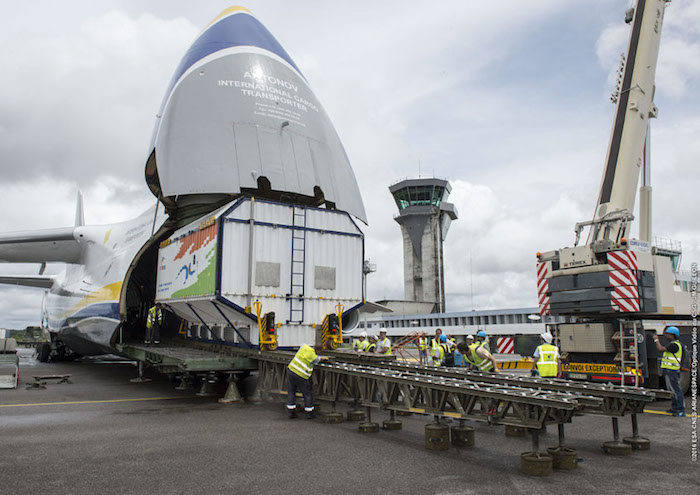
-
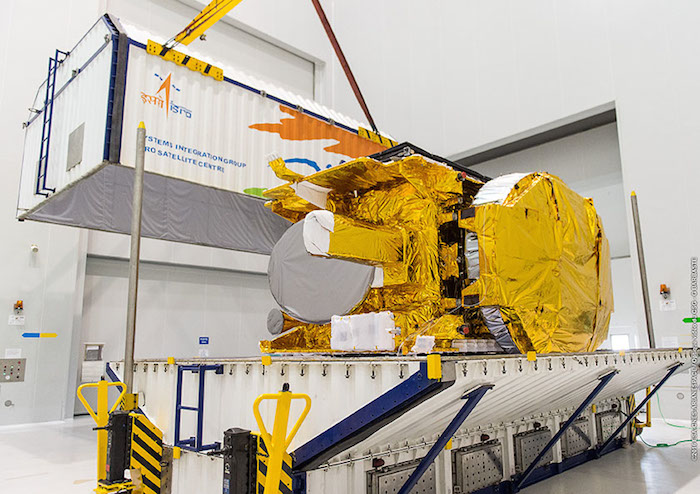
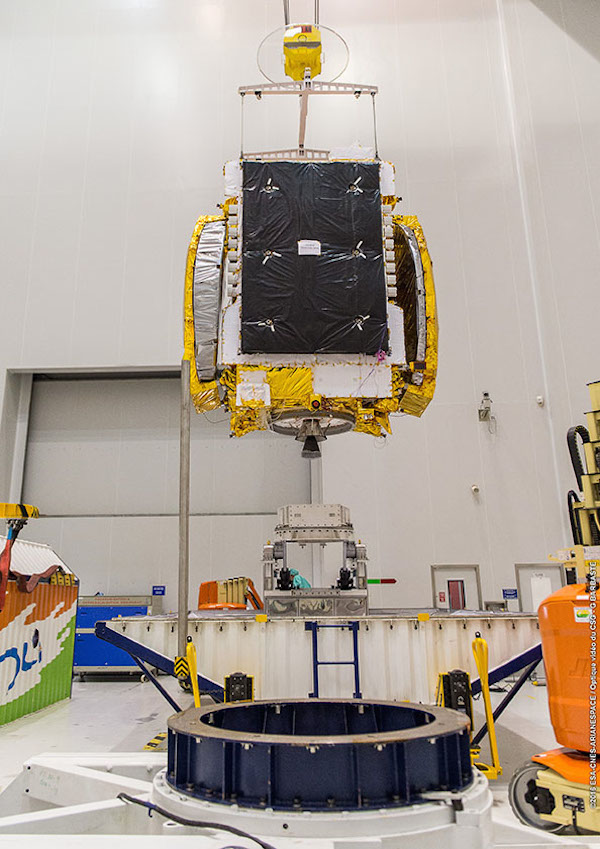
The GSAT-18 satellite is transferred in a clean room to undergo the required tests before launch preparation. It will be prepared and installed atop the launcher, with its co-passenger Superbird-8. scheduled launch in mid-July.
-
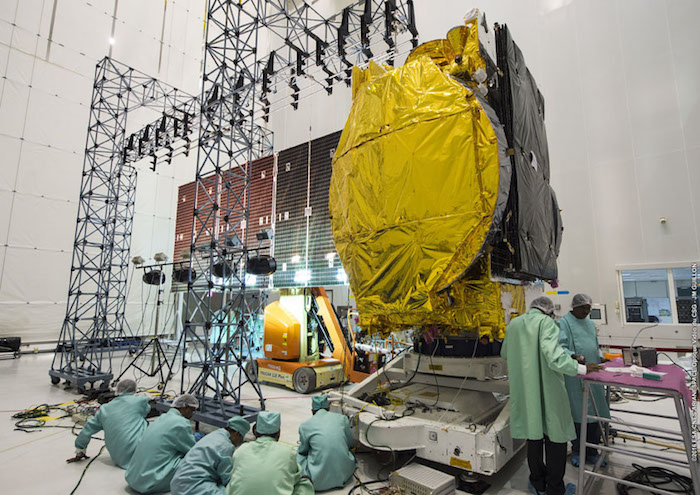
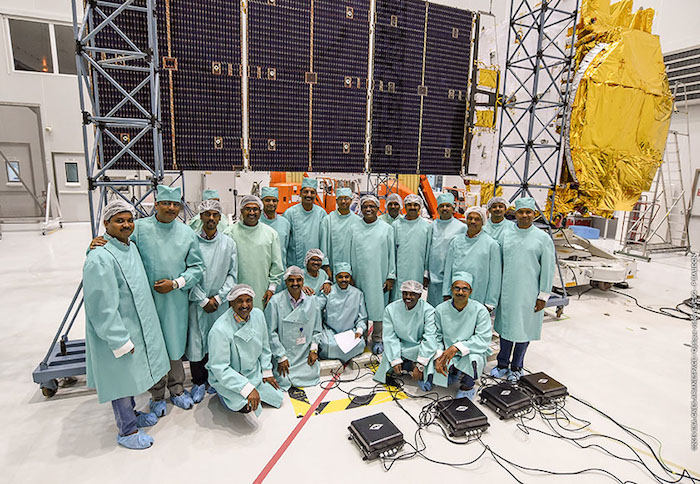
After a preparation phase, the solar panels of the satellite GSAT-18 India are deployed in a clean room for inspection. It will be launched into orbit with his co-passenger Superbird-8 mid-July.
Quelle: CNES
-
Japan’s DSN-1 military communications satellite damaged during transport to launch base
Sky Muster™ II comes to French Guiana for launch on Ariane 5
The second Sky Muster™ satellite to be orbited by Arianespace for Australia’s nbn™ arrived in French Guiana this week, taking one of the world’s largest communications platforms one step closer to its October launch aboard a heavy-lift Ariane 5.

Enclosed in its protective shipping container, Sky Muster™ II is unloaded from the chartered An-124 cargo jetliner at Félix Eboué Airport following the satellite’s arrival in French Guiana.
Weighing in at 6,400 kg. for liftoff, Sky Muster II will provide additional data capacity to support nbn’s delivery of satellite broadband service – helping bridge Australia’s digital divide for some 400,000 homes and businesses in regional and remote areas of the country.
Sky Muster II was delivered by a chartered Antonov An-124 cargo jetliner, which touched down yesterday at Félix Eboué Airport near the French Guiana capital city of Cayenne. After unloading in its protective shipping container, the satellite was ready for a road trip to the Spaceport launch base.
The October 4 mission – designated Flight VA231 in Arianespace’s launcher family numbering system – follows the company’s lofting of nbn’s first Sky Muster relay platform in September 2015, using another Ariane 5.
Artwork on Ariane 5 for Sky Muster’s Australia coverage
As with last year’s launch, the Ariane 5’s protective payload fairing for Flight VA231 will be decorated with artwork related to the nbn network that will enable communities across Australia to access fast broadband, with the goal of connecting eight million homes and businesses by 2020.
The artwork is a mosaic-style image composed of more than 700 Australians who won nbn’s “Blast Your Face Into Space” competition for the opportunity to include their picture on Arianespace’s workhorse launch vehicle.
On the Ariane 5 used last September with the original Sky Muster satellite, its payload fairing included a drawing from six-year-old student Bailey Brooks, whose school won a contest to name the satellite, submitting “Sky Muster” as the suggestion.
Joining Sky Muster II for Arianespace’s Flight VA231 in October will be India’s GSAT-18 telecommunications satellite, developed by the Indian Space Research Organisation (ISRO). GSAT-18 will have a liftoff mass in the 3,400-kg. category.
---
Checkout begins with Sky Muster™ II for Arianespace’s next Ariane 5 launch

Sky Muster™ II is removed from its protective shipping container in the Spaceport’s S5 payload preparation facility, readying this large satellite for pre-launch processing.
The Sky Muster™ II high-performance broadband satellite has begun its pre-launch preparations, initiating a process leading to this large spacecraft’s orbiting in October on an Arianespace dual-passenger Ariane 5 mission from French Guiana.

During activity at the Spaceport, Sky Muster™ II undergoes its fit-check with the payload adapter that will provide the interface when integrated on Ariane 5.
Built by SSL (Space Systems Loral) for Australia’s national broadband network (nbn™), Sky Muster II is in the Spaceport’s S5 payload processing facility, where it underwent a fit-check with the adapter that will serve as the interface when integrated with Ariane 5.
As with nbn’s first Sky Muster satellite – which was launched in September 2015 on another Ariane 5 flight – Sky Muster II is a Ka-band, high-throughput broadband satellite. It will utilize advanced-design multiple spot beams to optimize bandwidth for Australia’s widely-distributed population.
The two Sky Muster relay platforms are designed to deliver nbn’s advanced services for some of the most difficult to reach citizens in Australia, from mainland Australia and Tasmania to the offshore islands.
SSL’s 1300 spacecraft platform for Sky Muster II
Sky Muster II is based on SSL’s 1300 spacecraft platform, and will have a liftoff mass of approximately 6,400 kg. for October’s Ariane 5 mission, which is designated Flight VA231 in the Arianespace launcher family numbering system.
The co-passenger with Sky Muster II on Flight VA231 will be India’s GSAT-18 telecommunications satellite, developed by the Indian Space Research Organisation (ISRO). With a liftoff mass in the 3,400-kg. category, GSAT-18 continues India’s long history of launching its payloads on Ariane vehicles, which dates back to 1981.
Quelle: arianespace
-
Update: 14.09.2016
-
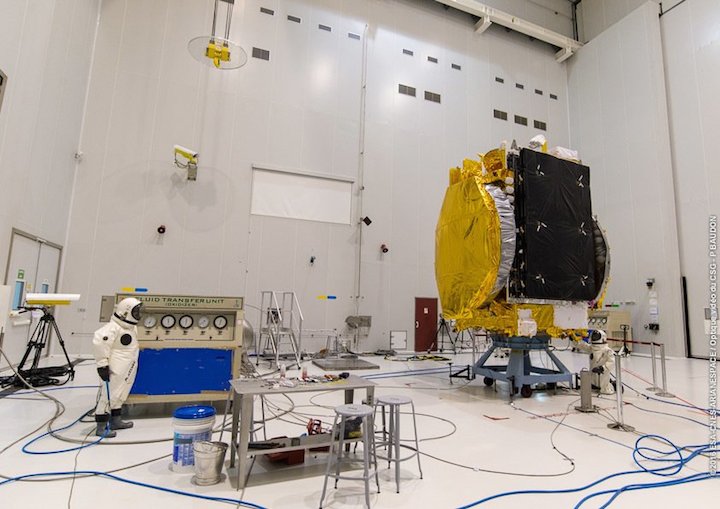
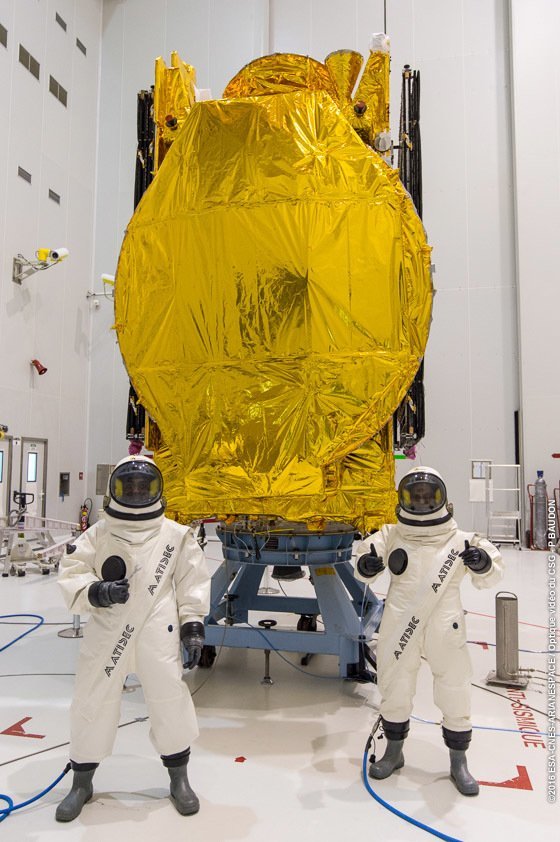
Quelle: arianespace
-
Update: 20.09.2016
.
Parallel launcher and payload preparations put Ariane 5 on track for next month’s mission

Riding atop a mobile launch table, Ariane 5 is shown at left during its transfer from the Spaceport’s Launcher Integration Building to its Final Assembly Building; while Sky Muster II and GSAT-18 undergo their separate fueling processes inside the S5 payload preparation facility (photos at center and right).
Pre-flight activities for Arianespace’s upcoming Ariane 5 mission are ramping up at the Spaceport in French Guiana, with launcher and payload preparations advancing in parallel for the October 4 liftoff.
In a major milestone reached this month, Ariane 5 was rolled out from the Spaceport’s Launcher Integration Building – where its core cryogenic stage, two solid boosters and cryogenic upper stage were mated – to the Final Assembly Building. This process formally transferred authority for the heavy-lift vehicle to Arianespace from production prime contractor Airbus Safran Launchers.
With Ariane 5 now under Arianespace’s responsibility, the launcher is in position to receive its two passengers: the Sky Muster II and GSAT-18 telecommunications satellites, both of which were fueled earlier this month inside the Spaceport’s S5 payload preparation facility.
The October 4 mission with Ariane 5 is designated Flight VA231 in Arianespace’s numbering system, and it will deliver the two spacecraft to geostationary transfer orbit.
Two telecommunications payloads, one launcher
Built by SSL (Space Systems Loral) for the Australian national broadband network (nbn™), Sky Muster II will utilize advanced-design multiple spot beams to help bridge the digital divide for some 400,000 homes and businesses in regional and remote areas of the country.
Sky Muster II is one of the world’s largest communications platforms with a liftoff mass estimated at 6,400 kg. Its launch follows the orbiting of nbn’s first Sky Muster satellite on an Arianespace Ariane 5 mission performed in September 2015.
Flight VA231’s second passenger – GSAT-18 – is a 3,400-kg.-category telecommunications spacecraft developed by the Indian Space Research Organisation (ISRO). Once in orbit, it will serve as a replacement for operational satellites that currently provide key national services in multiple frequency bands – to be joined by GSAT-17, which will be orbited on a future Ariane 5 mission from the Spaceport in French Guiana.
Quelle: arianespace
-
Update: 27.09.2016
-
Kommunikationssatellite GSAT-18 von ISRO auf Ariane-V-VA231 plaziert
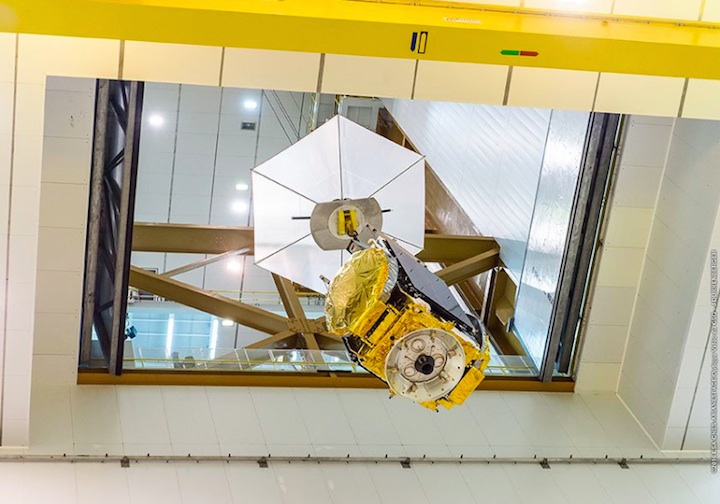
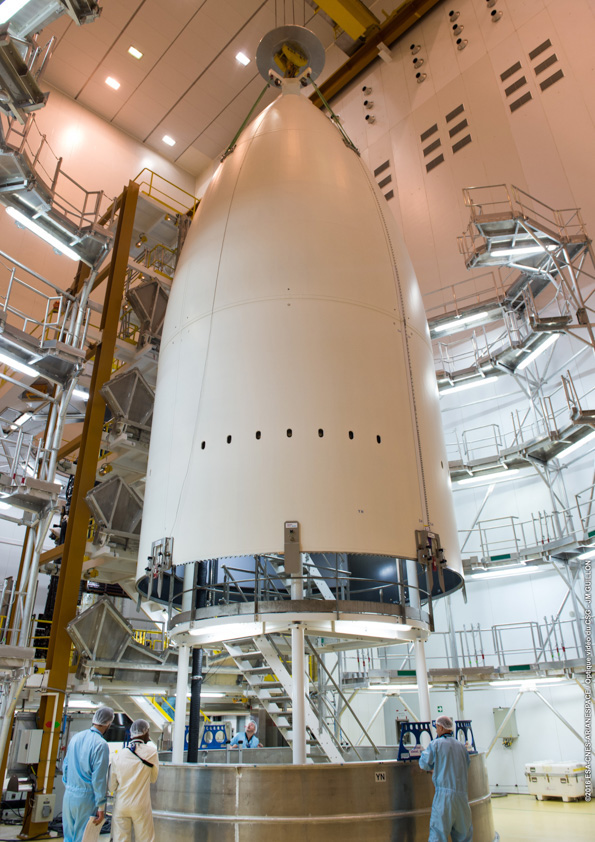
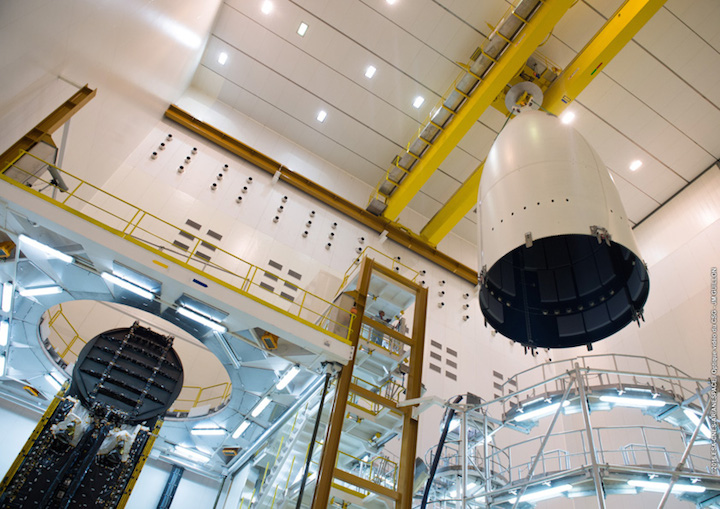
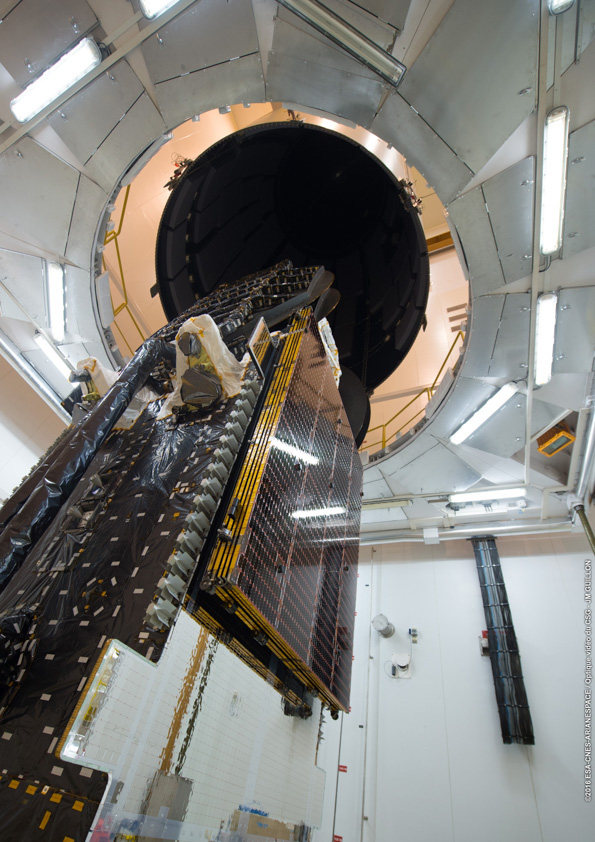
Quelle: CNES
-
Update: 30.09.2016
.
ARIANESPACE FLIGHT VA231
Sky Muster™ II and GSAT-18
For its eighth mission of 2016, and the year’s fifth Ariane 5 launch from the Guiana Space Center in French Guiana, Arianespace will orbit two satellites: Sky MusterTM II for the Australian operator nbn (National Broadband Network), and GSAT-18 for the Indian space agency ISRO (Indian Space Research Organization).
Sky MusterTM II and GSAT-18 will be the 542nd and 543rd satellites to be launched by Ari-anespace.
This Ariane 5 flight will be the 280th mission performed by the Arianespace launcher family.
The launch will be from Ariane Launch Complex No. 3 (ELA 3) in Kourou, French Guiana.
 |
Liftoff is planned on Tuesday, October 4, 2016 as early as possible within the following launch window: Webcast starts 15 minutes before. You can also watch the video transmission live on your iPad, iPhone or Android 4+ devices, the Arianespace HD App is available for free. Follow the lauch live: www.arianespace.com |
Quelle: arianespace
-
Update: 1.10.2016
.
Arianespace integrates Sky Muster™ II and GSAT-18 for its upcoming Ariane 5 launch

The final payload integration process for Arianespace Flight VA231 is highlighted in this photo series. At left, GSAT-18 is installed atop Ariane 5’s core stage inside the Spaceport’s Final Assembly Building. At center and right, Ariane 5’s payload fairing containing the Sky Muster™ II satellite is moved into position and then lowered over GSAT-18.
The Ariane 5 for Arianespace’s eighth mission of 2016 is now fully assembled following this week’s integration of its two satellite passengers at the Spaceport in French Guiana.
During activity in Ariane 5’s Final Assembly Building, the upper payload component – containing Sky Muster™ II, mounted on its SYLDA dispenser system and protected by an ogive-shaped fairing – was lowered into position over GSAT-18, which was previously installed atop the launcher’s central core.
This step clears the way for final checkout, which will enable the launch readiness review to be conducted on September 30, followed by Ariane 5’s rollout to the Spaceport’s ELA-3 launch zone the following Monday, and an early evening liftoff on Tuesday, October 4.
The upcoming mission is designated Flight VA231 in Arianespace’s numbering system, and it will deliver the two telecommunications payloads into geostationary transfer orbit.
An Ariane 5 mission for Australia and India
To be deployed first during the 32-minute flight sequence is Sky Muster™ II, which was produced by SSL (Space Systems Loral) for Australian operator nbn™. Carrying Ka-band transponders and with a liftoff mass estimated at 6,400 kg., the satellite will help extend high-speed internet across Australia – including the Norfolk, Christmas, Macquarie and Cocos islands.
Ariane 5’s second passenger – GSAT-18 – is a 3,400-kg.-category spacecraft developed by the Indian Space Research Organisation (ISRO), with 12 transponders in Ku-band and another 24 in C-band. Once in orbit, it will provide telecommunications services for India – strengthening ISRO’s current fleet of 14 operational satellites.
Flight VA231 will mark Arianespace’s eighth of 11 missions targeted in 2016, and is the company’s fifth this year using an Ariane 5 – which is one of three launch vehicles operated by Arianespace at the Spaceport, along with the medium-lift Soyuz and light-lift Vega.
Quelle: arianespace
-
Update: 4.10.2016
-
Ariane 5 reaches the launch zone for Arianespace’s October 4 liftoff

The heavy-lift Ariane 5 with its Sky Muster™ II and GSAT-18 payloads approaches the Spaceport’s ELA-3 launch zone during today’s rollout.
Arianespace has delivered another Ariane 5 to the launch zone at Europe’s Spaceport in French Guiana, clearing the way for tomorrow's heavy-lift mission with a pair of telecommunications satellites: Sky Muster™ II and GSAT-18.
Riding atop a mobile launch table, Ariane 5 today completed its transfer from the Spaceport’s Final Assembly Building – where payload integration occurred – to the dedicated ELA-3 launch complex. With this rollout completed, the final countdown will begin for an October 4 liftoff at the start of a 1-hr., 15-min. launch window opening at 5:30 p.m. local time in French Guiana.
Tomorrow’s mission is designated Flight VA231, and it has an estimated payload performance of 10,660 kg. – a total that factors in Sky Muster™ II and GSAT-18, plus the dual-satellite dispenser system and integration hardware. Both passengers are to be deployed to geostationary transfer orbit during a 32-min. flight sequence.
Arianespace supports Australian and Indian customers
Sky Muster™ II is the mission’s upper passenger and will be released first in the flight sequence at 28 min. after liftoff. Produced by SSL (Space Systems Loral) for operator nbn™, it will help extend high-speed internet across Australia, including the country’s rural and isolated regions.
To be deployed from Ariane 5’s lower passenger position is GSAT-18, which was built by the Indian Space Research Organisation (ISRO) to strengthen its current fleet of 14 operational telecommunications satellites. This spacecraft’s separation will occur approximately 32 min. after liftoff – completing the October 4 mission.
As the fifth heavy-lift Ariane 5 flight so far in 2016, tomorrow’s launch will continue a busy year of mission activity for Arianespace’s full family of launchers, which also has included two flights performed with the medium-lift Soyuz and one using the lightweight Vega.
-
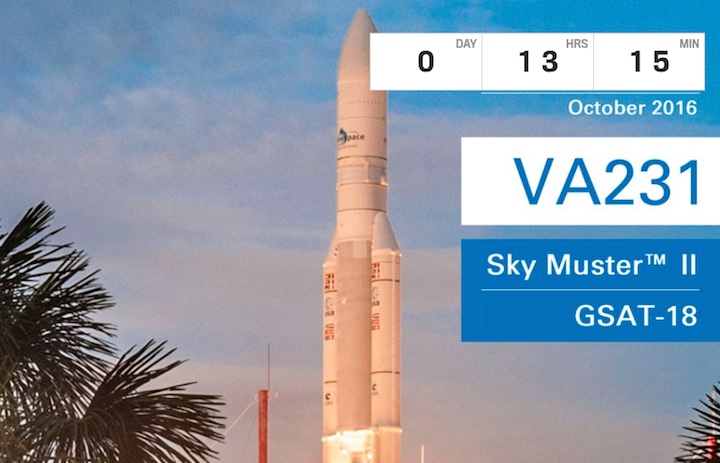
Quelle: arianespace
...
Update: 20.45 MESZ
.
FLIGHT VA231 – Sky MusterTM II and GSAT-18:
DELAYED 24 HOURS DUE TO WEATHER CONDITIONS
Due to the unfavorable weather conditions currently observed over the Guiana Space Center in Kourou, Ari-anespace has decided to delay the launch – planned for October 4, 2016 – by 24 hours. Flight VA231 will place into geostationary transfer orbit the Sky MusterTM II and GSAT-18 telecommunications satellites.
As the weather forecast for tomorrow is favorable, the liftoff of the Ariane 5 is now planned for Wednesday, October 5, 2016, as early as possible within the following launch window:
> Between 05:30 p.m. and 06:45 p.m., Kourou time
> Between 04:30 p.m. and 05:45 p.m., Washington D.C. time
> Between 20:30. and 21:45, Universal Time (UTC)
> Between 10:30 p.m. and 11:45 p.m., Paris time
> Between 2:00 a.m. and 3:15 a.m., Bangalore, India time on October 6
> Between 7:30 a.m. and 8:45 a.m., Sydney, Australia time on October 6.
The launcher, with its Sky MusterTM II and GSAT-18 satellite payloads, remains in a safe standby condition.
Quelle: arianespace
-
Update: 5.10.2016
-
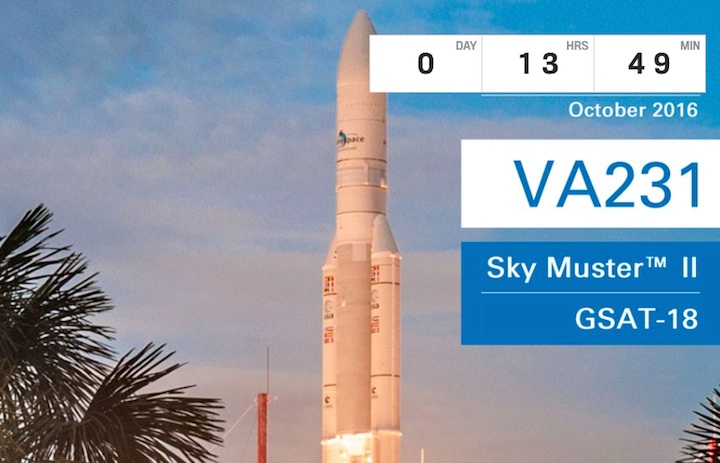
...
Update: 21.45 MESZ
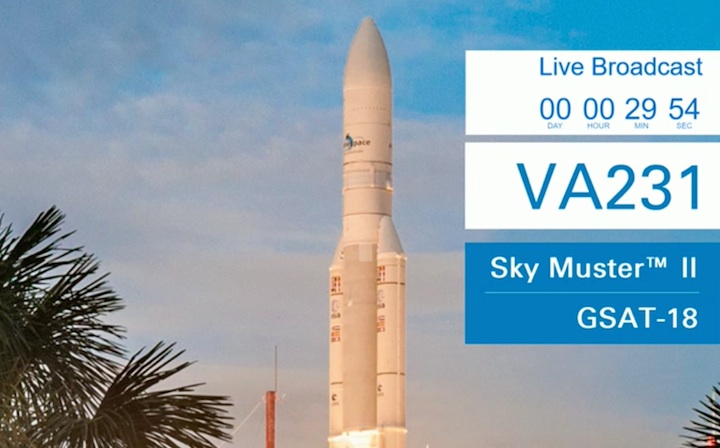
...22.15 MESZ
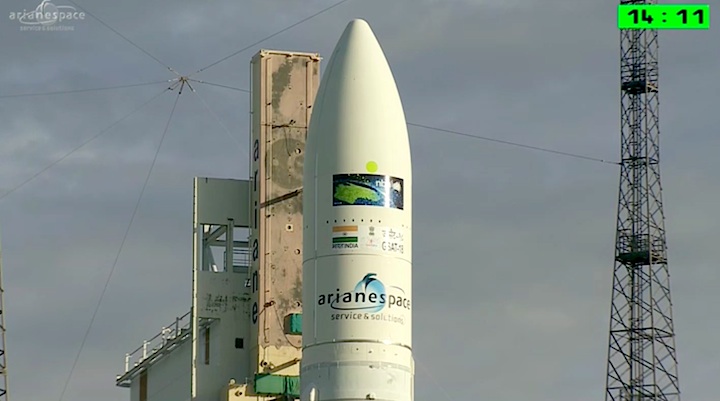
...
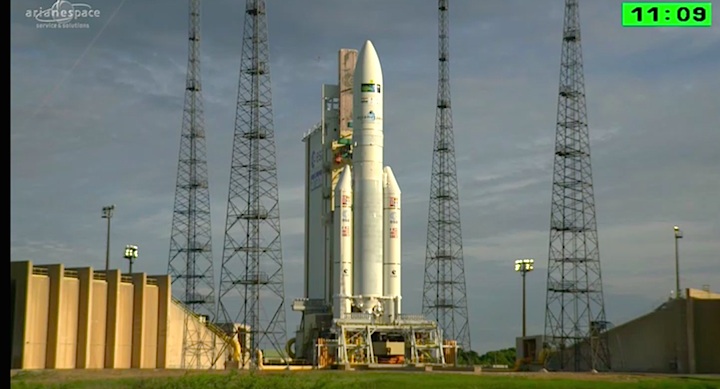
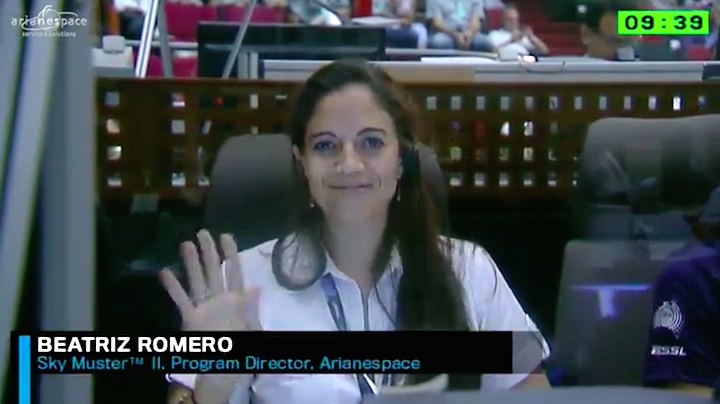
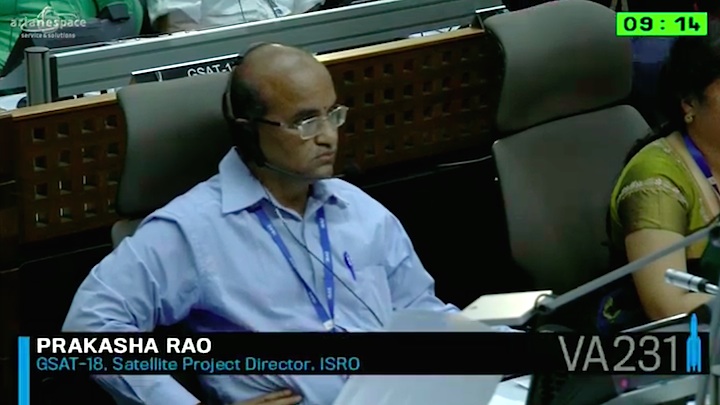
...
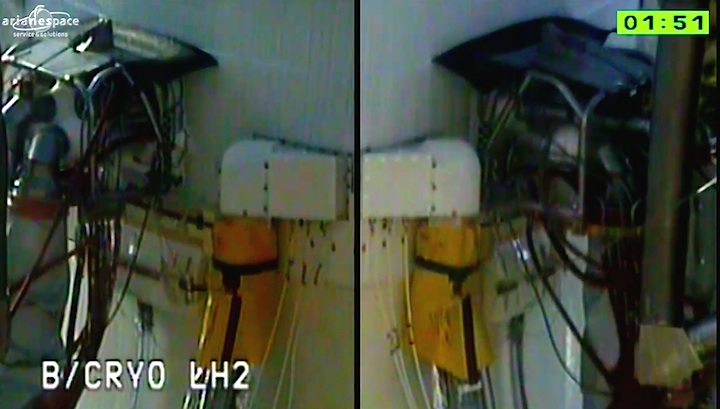
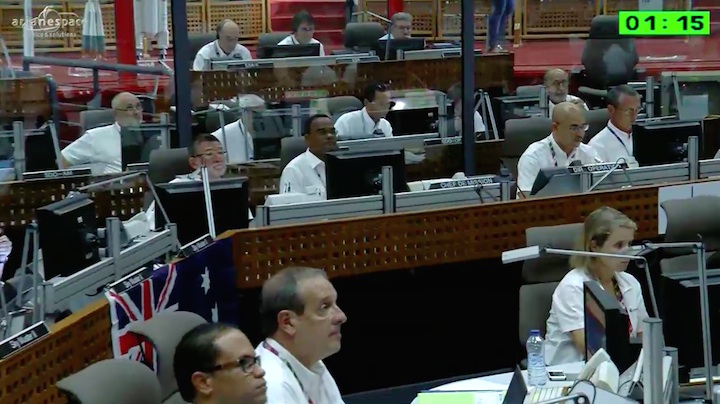
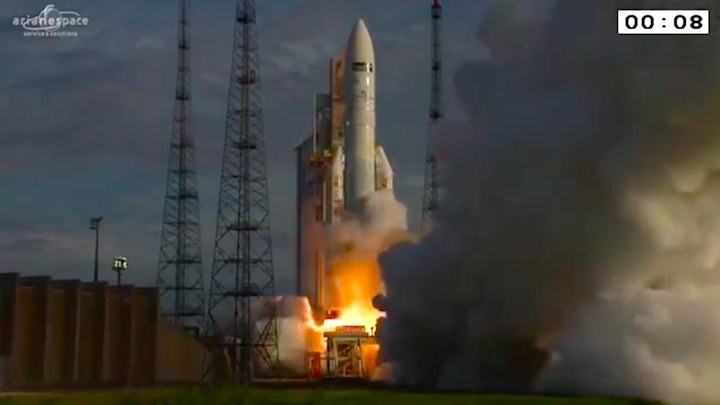
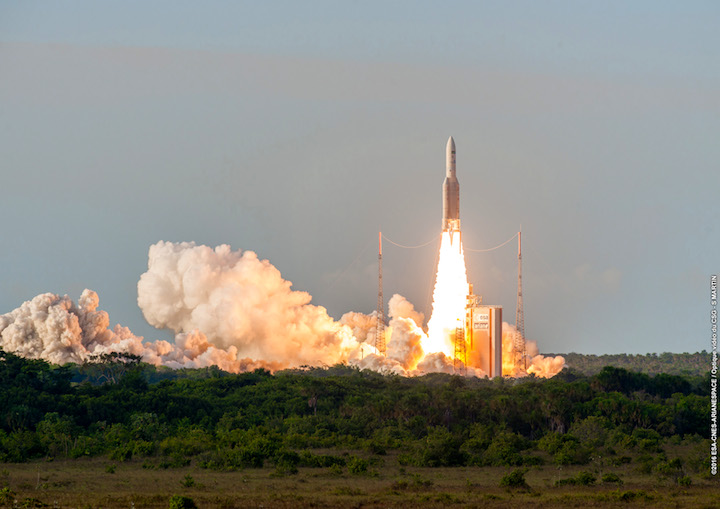
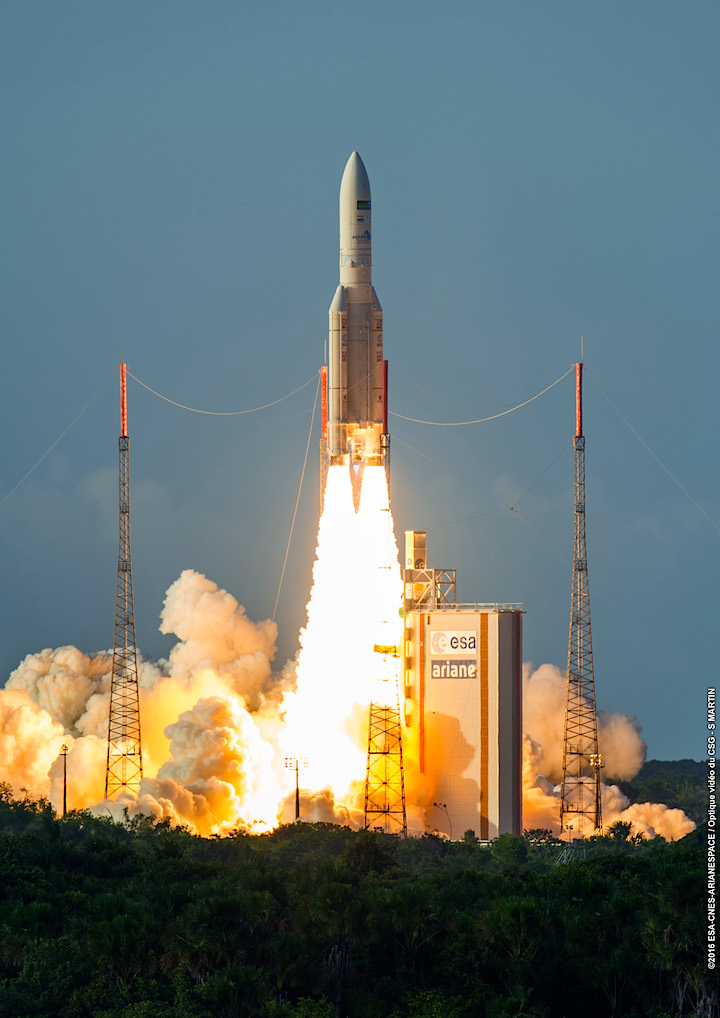
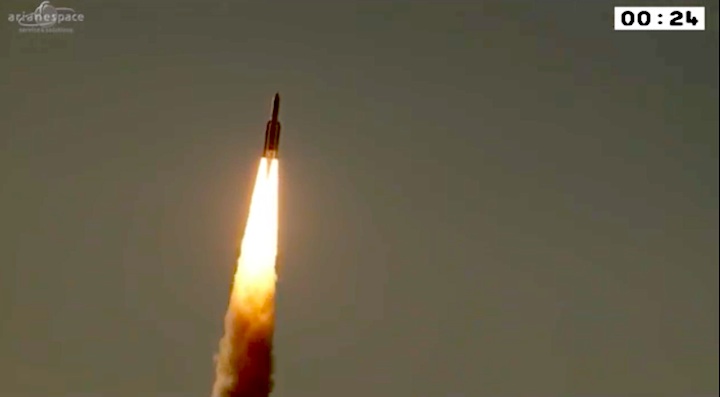
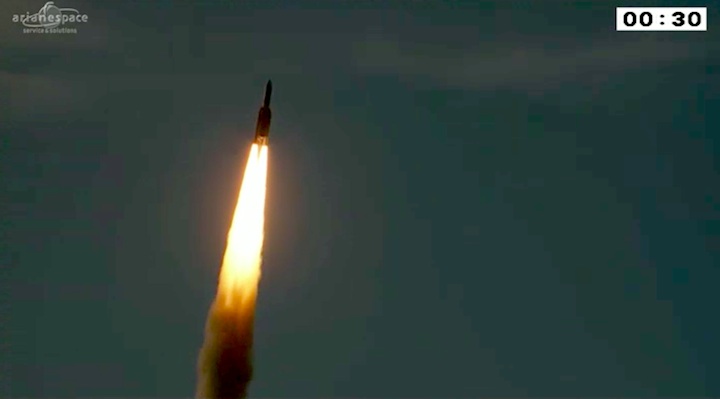
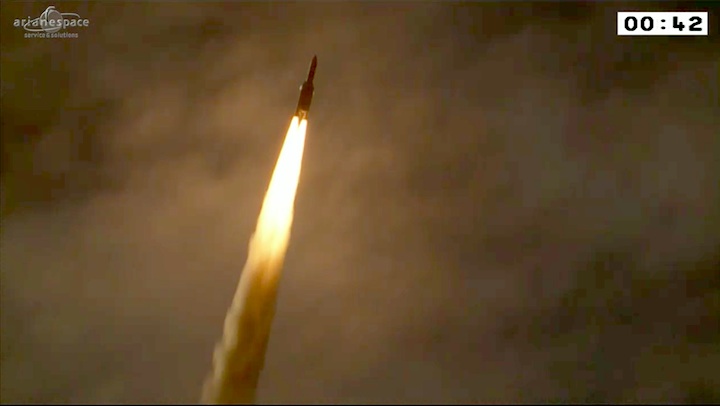
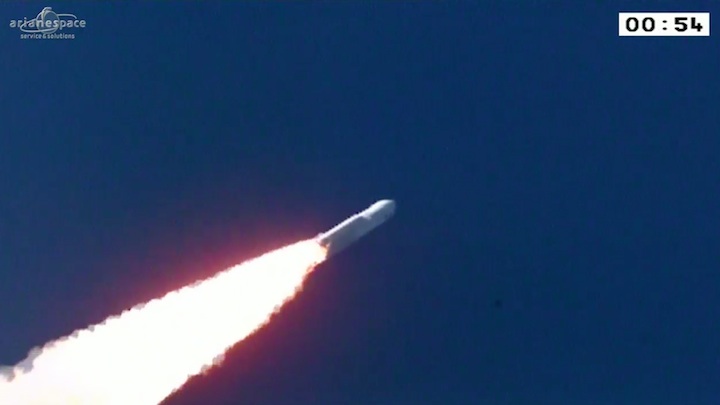
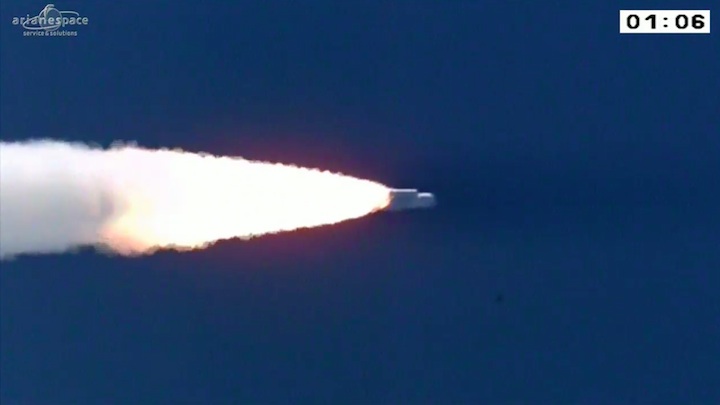
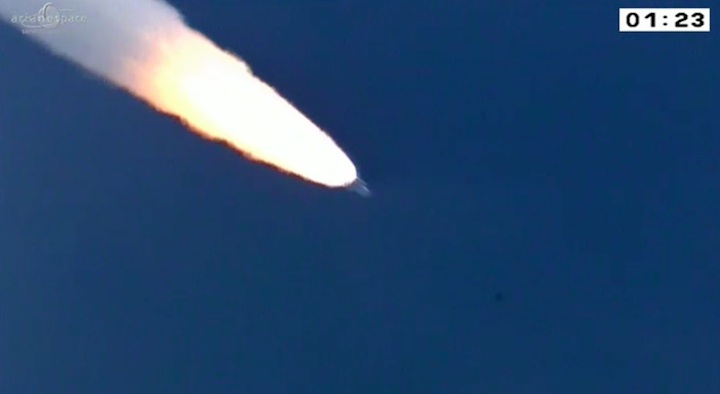
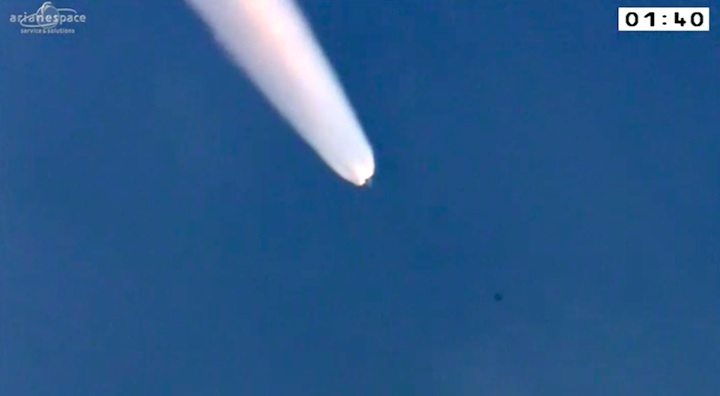
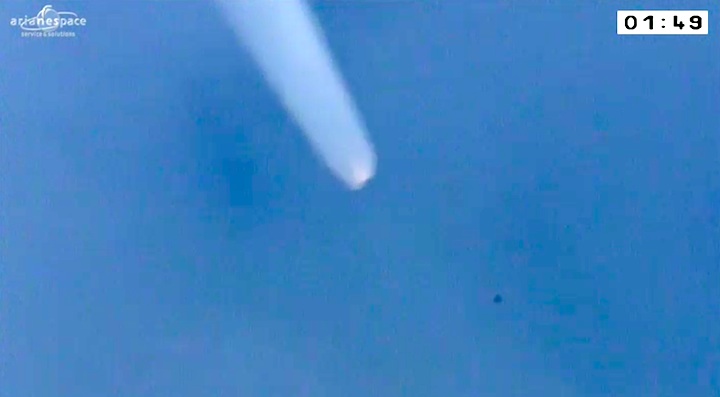
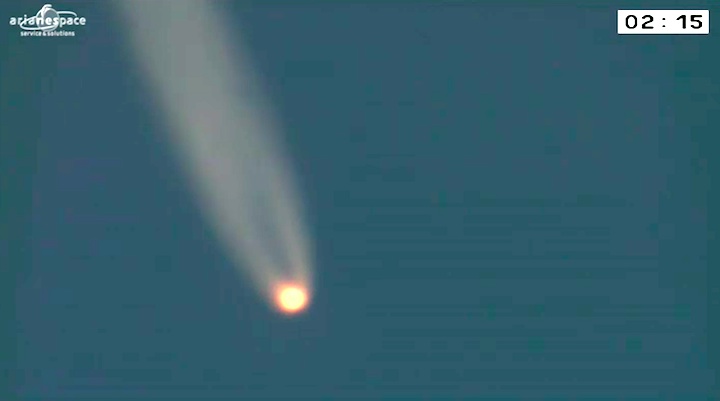
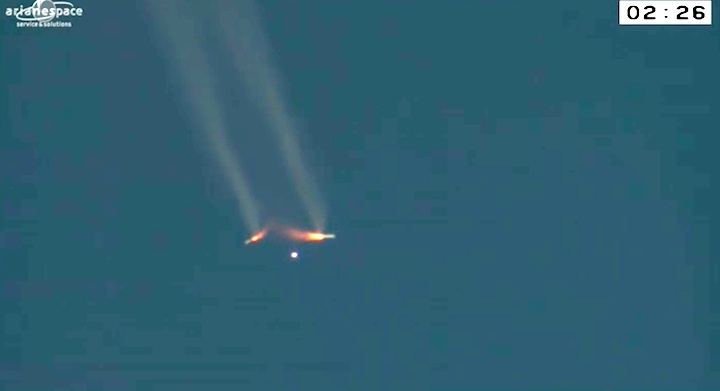
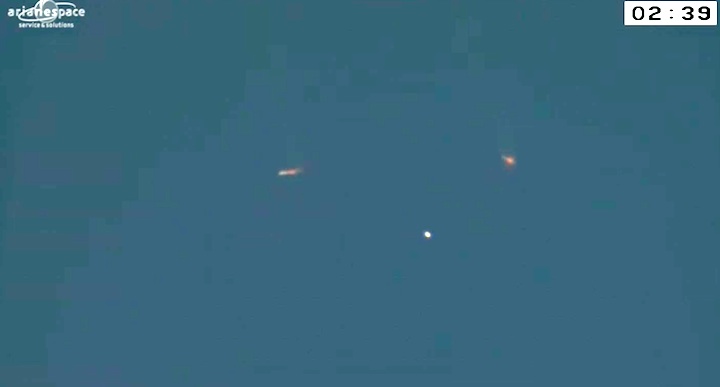
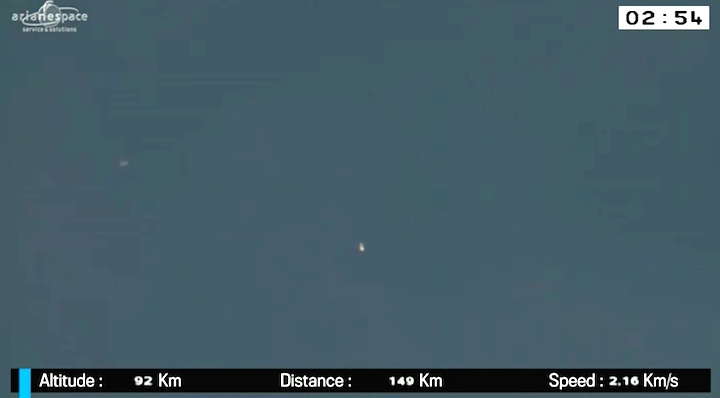
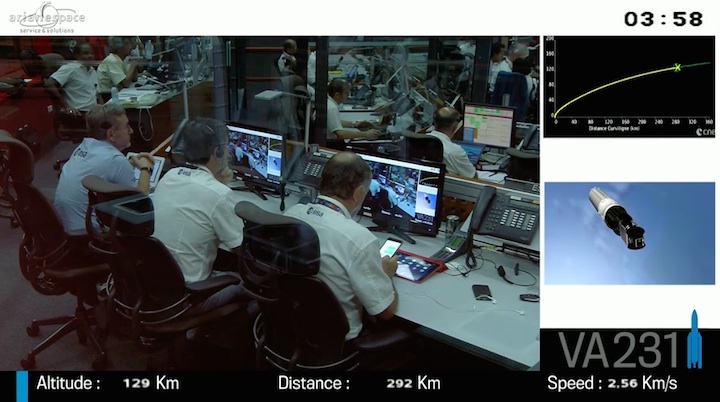
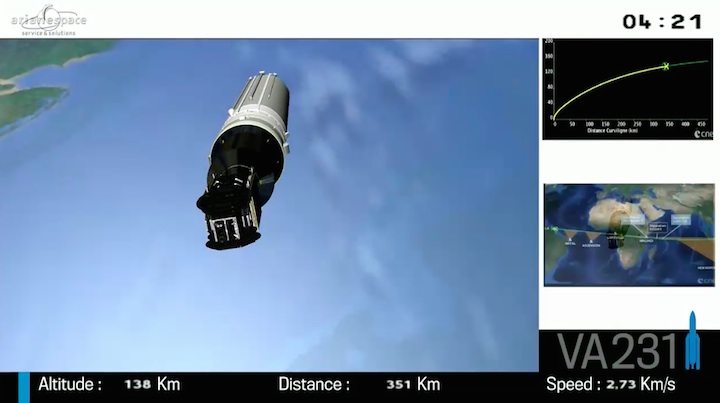
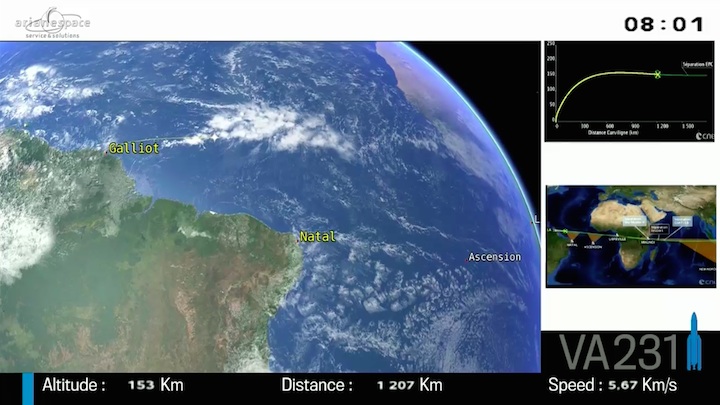
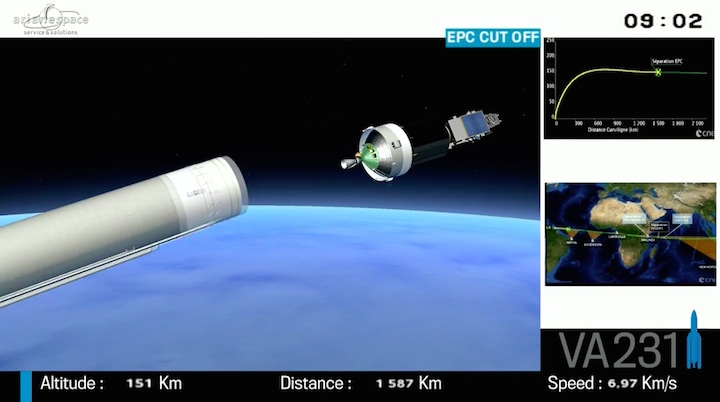
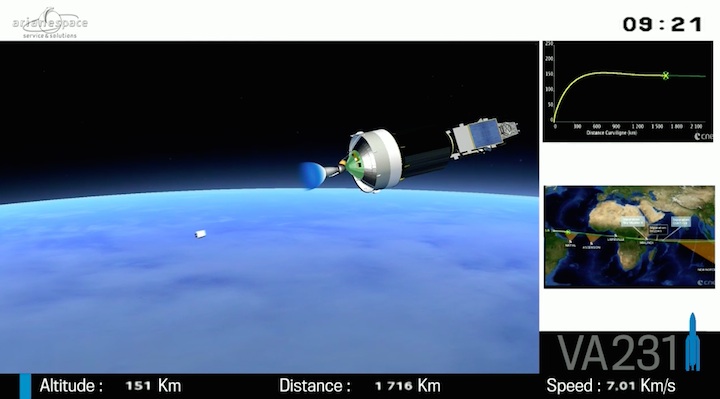
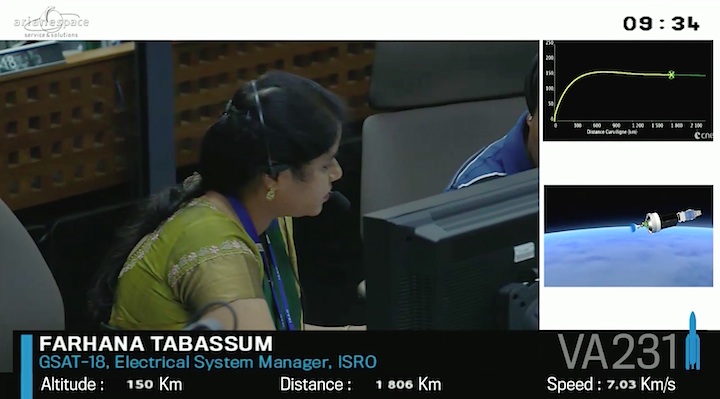
Quelle: arianespace

